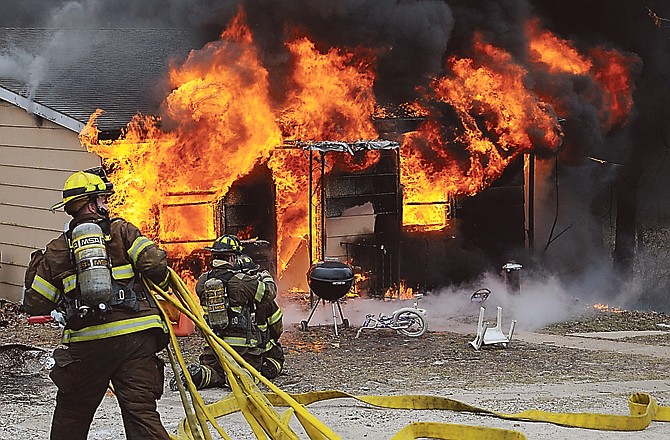ST. LOUIS (AP) - A crude new method of making methamphetamine poses a risk even to Americans who never get anywhere near the drug: It is filling hospitals with thousands of uninsured burn patients requiring millions of dollars in advanced treatment - a burden so costly that it's contributing to the closure of some burn units.
So-called shake-and-bake meth is produced by combining raw, unstable ingredients in a 2-liter soda bottle. But if the person mixing the noxious brew makes the slightest error, such as removing the cap too soon or accidentally perforating the plastic, the concoction can explode, searing flesh and causing permanent disfigurement, blindness or even death.
An Associated Press survey of key hospitals in the nation's most active meth states showed that up to a third of patients in some burn units were hurt while making meth, and most were uninsured. The average treatment costs $6,000 per day. And the average meth patient's hospital stay costs $130,000 - 60 percent more than other burn patients, according to a study by doctors at a burn center in Kalamazoo, Mich.
The influx of patients is overwhelming hospitals and becoming a major factor in the closure of some burn wards. At least seven burn units across the nation have shut down over the past six years, partly due to consolidation but also because of the cost of treating uninsured patients, many of whom are connected to methamphetamine.
Burn experts agree the annual cost to taxpayers is well into the tens if not hundreds of millions of dollars, although it is impossible to determine a more accurate number because so many meth users lie about the cause of their burns.
Larger meth labs have been bursting into flame for years, usually in basements, backyard sheds or other private spaces. But those were fires that people could usually escape. Using the shake-and-bake method, drugmakers typically hold the flammable concoction up close, causing burns from the waist to the face.
"You're holding a flame-thrower in your hands," said Jason Grellner of the Franklin County Sheriff's Department.
Also known as the "one-pot" approach, the method is popular because it uses less pseudoephedrine - a common component in some cold and allergy pills. It also yields meth in minutes rather than hours, and it's cheaper and easier to conceal. Meth cooks can carry all the ingredients in a backpack and mix them in a bathroom stall or the seat of a car.
The improvised system first emerged several years ago, partly in response to attempts by many states to limit or forbid over-the-counter access to pseudoephedrine. Since then, the shake-and-bake recipe has spread to become the method of choice.
By 2010, about 80 percent of labs busted by the federal Drug Enforcement Administration were using shake-and-bake recipes, said Pat Johnakin, a DEA agent specializing in meth.
So instead of a large lab that supplies many users, there are now more people making meth for their personal use. The consequences are showing up in emergency rooms and burn wards.
"From what we see on the medical side, that's the primary reason the numbers seem to be going up: greater numbers of producers making smaller batches," said Dr. Michael Smock, director of the burn unit at Mercy Hospital St. Louis.
It's impossible to know precisely how many people are burned while making shake-and-bake meth. Some avoid medical treatment, and no one keeps exact track of those who go to the hospital. But many burn centers in the nation's most active meth-producing states report sharp spikes in the number of patients linked to meth.
And experts say the trend goes well beyond those facilities, easily involving thousands of drug users.
Researchers at the University of Iowa found that people burned while making meth typically have longer hospital stays and more expensive bills than other burn patients - bills that are frequently absorbed by the hospital since a vast majority of the meth-makers lack insurance.
Medicaid provides reimbursement for many patients lacking private insurance, but experts say it amounts to pennies on the dollar.

